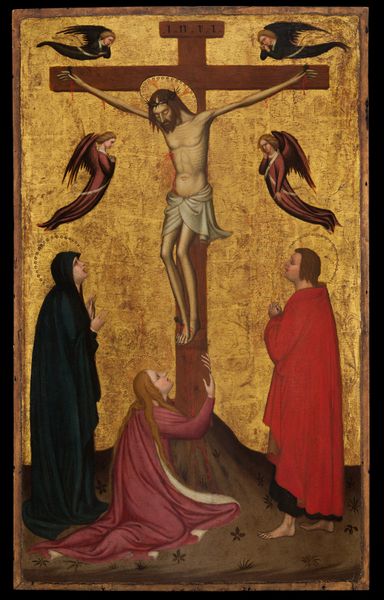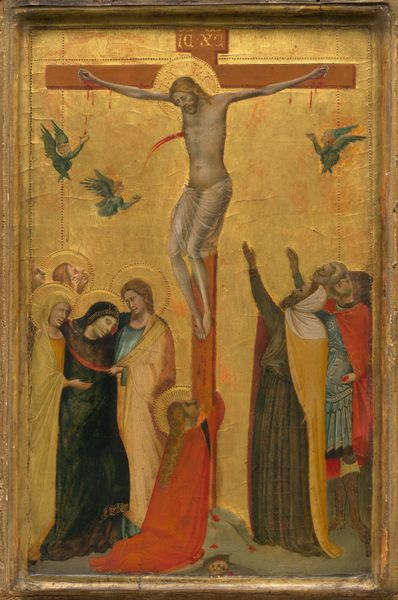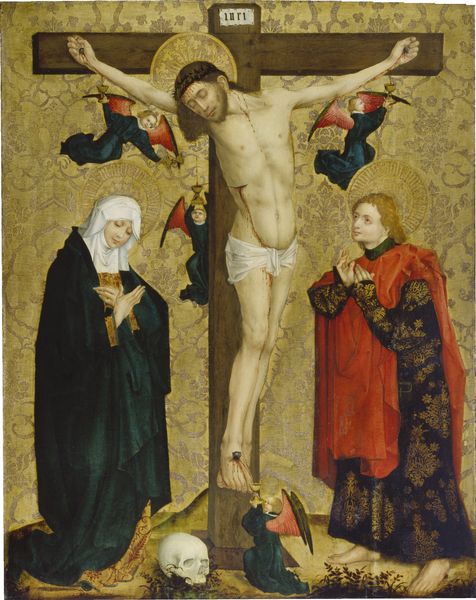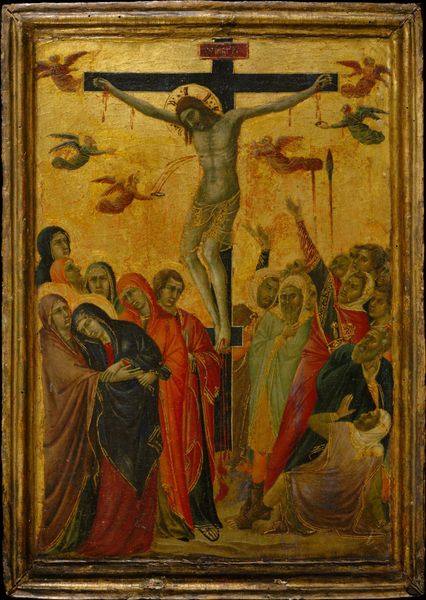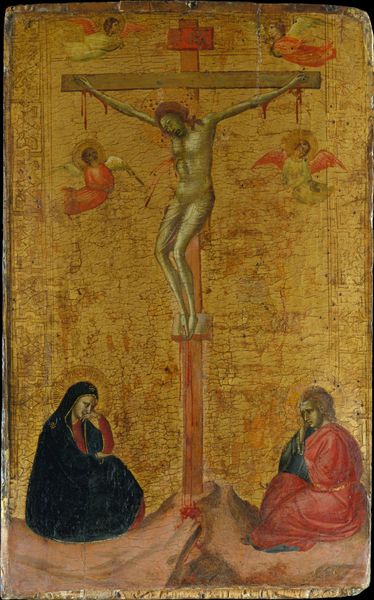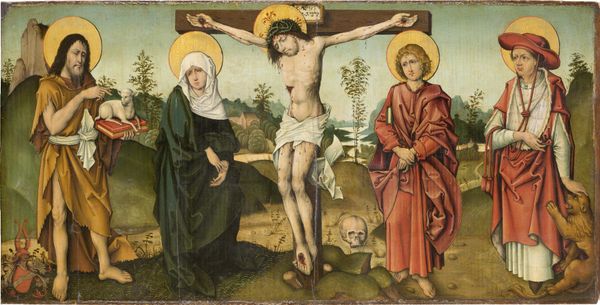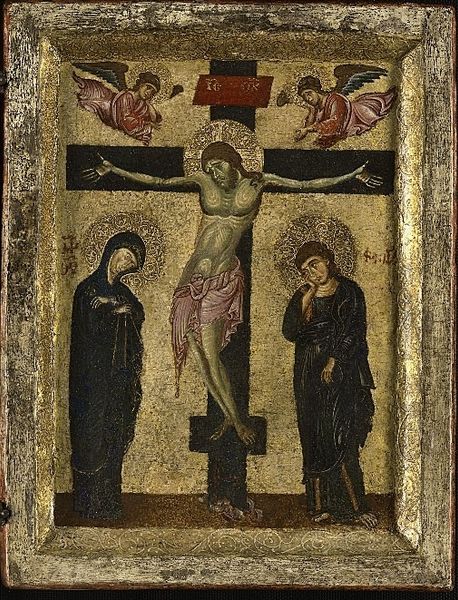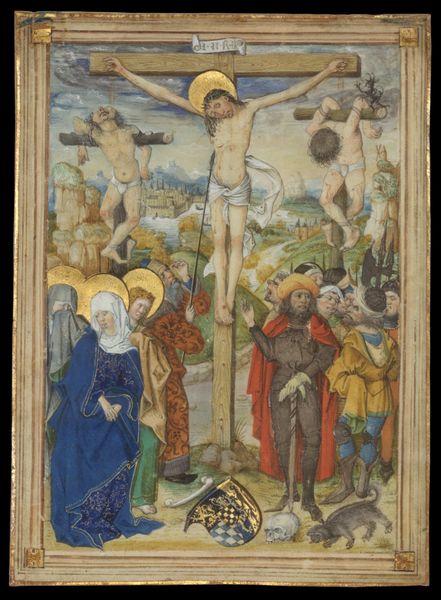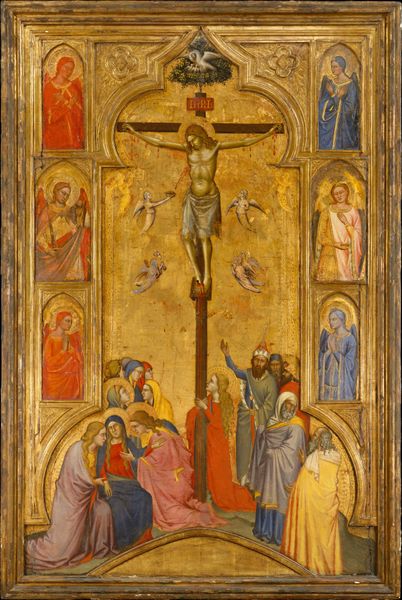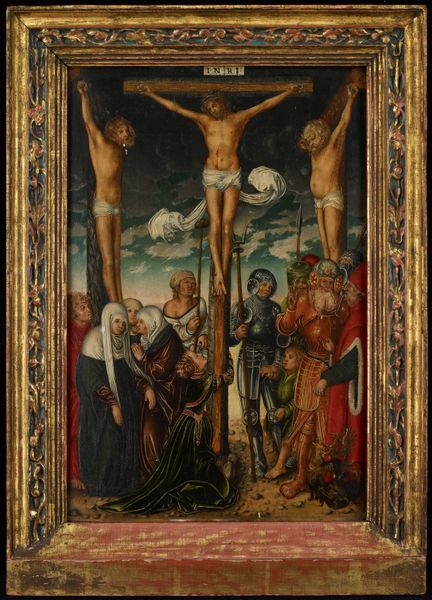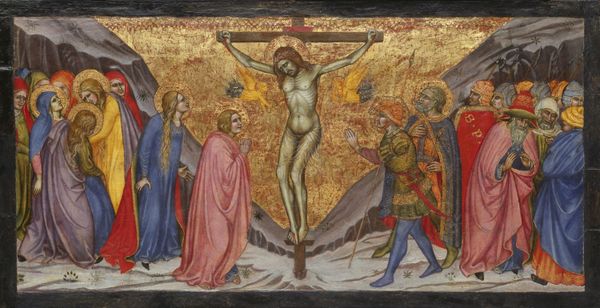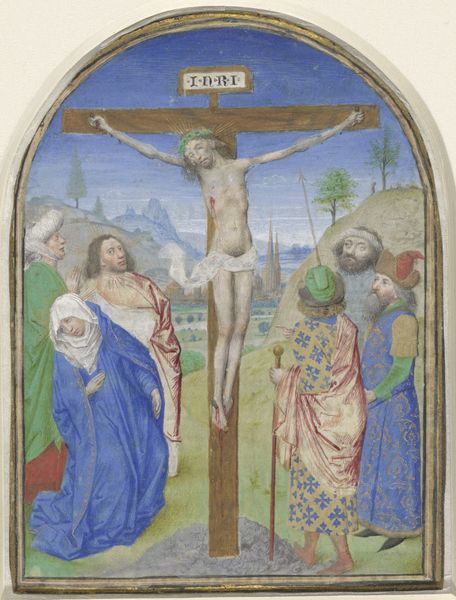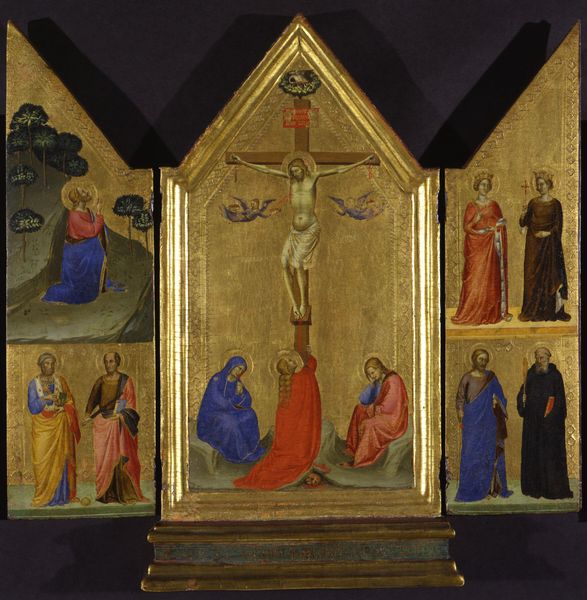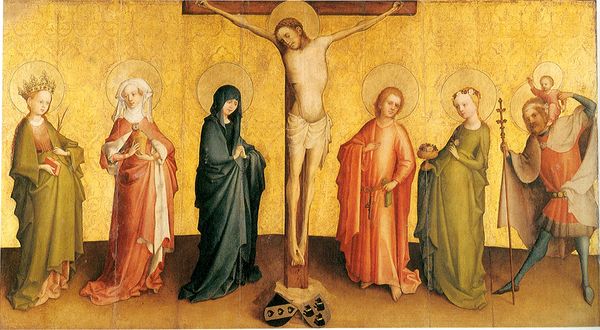
tempera, painting, fresco
#
portrait
#
medieval
#
allegory
#
narrative-art
#
tempera
#
painting
#
gothic
#
figuration
#
fresco
#
crucifixion
#
history-painting
#
italian-renaissance
#
virgin-mary
#
christ
Dimensions: Overall, with engaged frame, 25 1/4 x 18 5/8 in. (64.1 x 47.3 cm), painted surface 22 1/4 x 15 3/4 in. (56.5 x 40 cm)
Copyright: Public Domain
Curator: This is "The Crucifixion" by Ugolino da Siena, painted sometime between 1310 and 1320. The piece employs tempera, with potential fresco elements. What strikes you first? Editor: The sheer volume of gold leaf, I'd say. It creates this incredibly textured, almost vibrating background. It emphasizes the symbolic value of the subject rather than aiming for pure realism. I’m curious about where the materials sourced came from. Curator: Absolutely. The use of gold leaf does draw your attention immediately, nodding to its spiritual significance but also to power dynamics. Christ on the cross has historically been used as a tool to oppress. Do you see it here? The female figures on the left versus the men on the right suggest the Virgin’s experience against something else. Editor: I do. Considering the likely workshop setting in Siena, I’d bet multiple hands were involved in preparing the wood panel and applying the gold. The gilding process itself—the layering, burnishing, and potential tooling—speaks to a collaborative effort. These artisanal trades in 14th century Italy relied on specialized skill and specific sets of production for paintings like these. Curator: That labor definitely informs the reading of this image. Thinking through how gender plays into labor, who benefits, the history of Italy… it raises essential questions around whose stories are centered, who is included or not. And looking closer, it seems the fresco technique gives the painting some depth and makes the images pop even more. Editor: That layering also gives way to a consideration of painting being less for display, and more devotional, liturgical…even practical in how it engages the parishioners. The making becomes intrinsically linked to the function. It feels vital to think of that original intent within the communities which is served. Curator: Agreed. Understanding its original context—the purpose it served—helps us decipher its meaning beyond a singular art-historical lens. Editor: Indeed. The piece invites an investigation into the art market of the era, material access, and its intersection with belief.
Comments
No comments
Be the first to comment and join the conversation on the ultimate creative platform.
